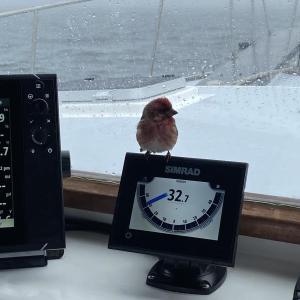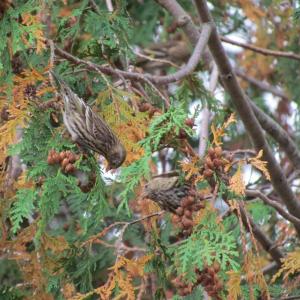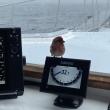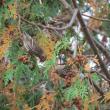A Finch Irruption Detected by Boat
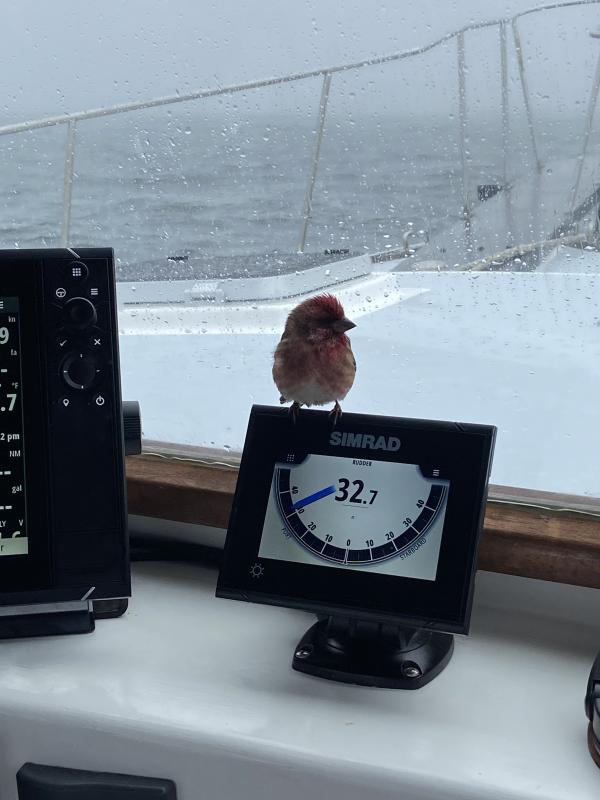 A migrating male purple finch took refuge on this boat about 12 miles off Boothbay Harbor last week. (Photo courtesy Sewall Maddocks.)
A migrating male purple finch took refuge on this boat about 12 miles off Boothbay Harbor last week. (Photo courtesy Sewall Maddocks.)
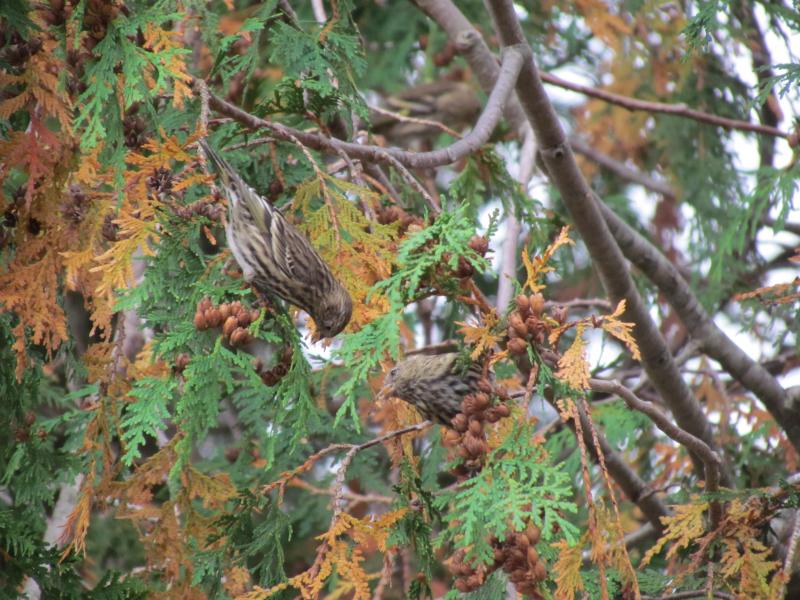 Pine siskins are members of the finch family and are known for showing fall and winter irruptions south into the northeastern U.S. on average every two years. (Photo courtesy Jeff Wells.)
Pine siskins are members of the finch family and are known for showing fall and winter irruptions south into the northeastern U.S. on average every two years. (Photo courtesy Jeff Wells.)
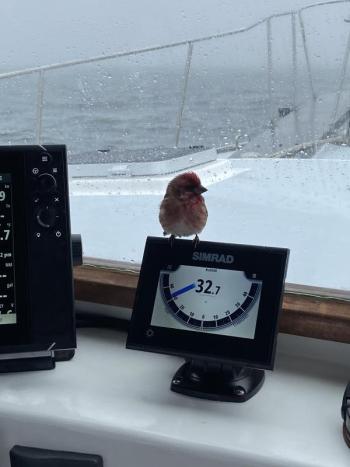 A migrating male purple finch took refuge on this boat about 12 miles off Boothbay Harbor last week. (Photo courtesy Sewall Maddocks.)
A migrating male purple finch took refuge on this boat about 12 miles off Boothbay Harbor last week. (Photo courtesy Sewall Maddocks.)
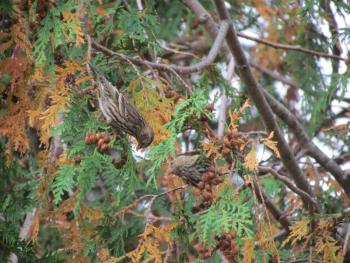 Pine siskins are members of the finch family and are known for showing fall and winter irruptions south into the northeastern U.S. on average every two years. (Photo courtesy Jeff Wells.)
Pine siskins are members of the finch family and are known for showing fall and winter irruptions south into the northeastern U.S. on average every two years. (Photo courtesy Jeff Wells.)
Last week, a cousin sent us a photo taken by her husband who was about 12 miles out-to-sea from Boothbay Harbor at the time of the photo. The bird landed on the boat then took refuge inside the wheelhouse to rest for a while. We identified the bird for him as a handsome purple finch.
What was a purple finch, a bird many of you have seen at your backyard bird feeder, doing out to sea?
Finches are one of the families of birds most well known for special kind of long-distance movements called “irruptions” or sometimes “invasions.” Most bird species have a clear annual migration pattern that the bulk of the population follows in timing and location. For example, virtually all blackburnian warblers leave their northern breeding range and migrate south every single year to spend the winter in the northern Andes of South America. Virtually every black-throated blue warbler spends the winter in the Greater Antilles.
But in the finch family there are a group of northern breeding species in which all or some of the population may stay in or near some or part of the breeding range all winter in some years but in other years may travel far south of the breeding range. This is what researchers call “irruptive” behavior. Birders in the U.S. look forward to years when large numbers of some of these finches may come south. The finch species that do this include purple finches, pine siskins, common redpolls, evening grosbeaks, pine grosbeaks, white-winged crossbills, and sometimes red crossbills. At least two of these species, pine siskin and common redpoll, tend to show these southerly “irruptions” on roughly two-year cycles, especially in the eastern part of their range.
The reason for the sudden influx of birds south is thought to be the result of a lack of sufficient food over a large area because of a cycle in the production of seeds in northern trees. These tree species include especially conifers like spruce, pine, larches, balsam fir, and others, and broad-leaved tree like birches and alders, for example. Over very large areas, large proportions of the trees can all show high seed production in one year and very low in another.
Such very large landscapes of the same tree species showing synchrony in seed production is unusual and found in few places. The Boreal Forest of Canada and Alaska is one of the last, large intact forest biomes left on the planet, allowing this phenomenon to continue. Bird populations across large parts of the Boreal Forest may find abundant food resources that allow greater survival and large numbers of young produced in one year, followed by scarce food resources as they move into the fall and early winter. That combination seems to turn on a switch in many of the birds that triggers them to fly quickly south.
This year in the northeastern U.S. and southeastern Canada, birders had already been noticing an uptick in the numbers of purple finches starting in late August. Incidentally, there are some other northern bird species in addition to finches that can experience irruptions, presumably based on the same dynamics as in finches. One of these is the red-breasted nuthatch, which also began showing up in numbers south of its normal breeding range and outside its normal habitats in August.
Just this week we began seeing large flocks of another irruptive finch, the pine siskin, here in Maine. A flock or flocks together totaling over a hundred birds has been noisily giving their “shreee” calls from the treetops in the neighborhood around our house. When we don’t hear them, we scan the northern white cedar trees beside our neighbor’s driveway and more often then not we will find them there intently feeding on the seeds in the tree’s small cones.
A few birders have begun finding small numbers of evening grosbeaks here in Maine, too. Some people may remember back in the 1970s and 1980s when backyard feeders in Maine might host flocks of a hundred or more—people sometimes even complained about the amount of bird seed they had to buy to keep up with their appetites! We don’t expect to return to those kinds of numbers, but it would be a treat to be able to see a few of these big , yellow-black-and-white, thick-billed finches—a strikingly beautiful bird.
The finches are back. Enjoy the finches, whatever species you may see!
Jeffrey V. Wells, Ph.D., is a Fellow of the Cornell Lab of Ornithology and Vice President of Boreal Conservation for National Audubon. Dr. Wells is one of the nation's leading bird experts and conservation biologists and author of the “Birder’s Conservation Handbook.” His grandfather, the late John Chase, was a columnist for the Boothbay Register for many years. Allison Childs Wells, formerly of the Cornell Lab of Ornithology, is a senior director at the Natural Resources Council of Maine, a nonprofit membership organization working statewide to protect the nature of Maine. Both are widely published natural history writers and are the authors of the popular book, “Maine’s Favorite Birds” (Tilbury House) and “Birds of Aruba, Bonaire, and Curaçao: A Site and Field Guide,” (Cornell University Press).
Event Date
Address
United States

